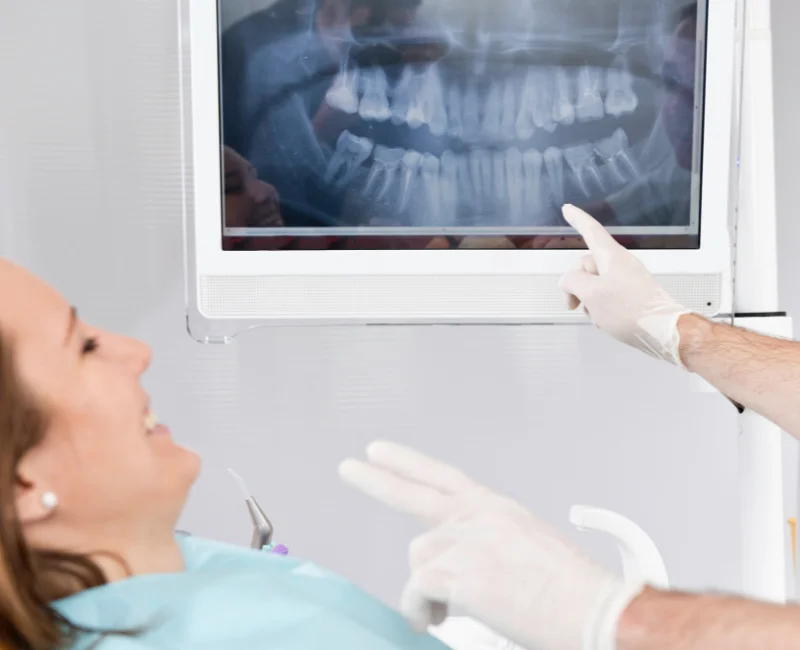3D Dental Imaging
3D dental imaging revolutionizes traditional x-rays by offering a three-dimensional view of your mouth, face, and head. This advanced technology allows dentists to examine your dental structures from virtually any angle, providing incredibly detailed insights that enhance diagnosis and treatment planning.
3D dental imaging is sometimes referred to as cone beam CT scanning, which is the technology that makes the scan possible. The name “cone beam” comes from the precise cone shape of the invisible x-ray beam that the scanner emits. By sending out the beam at different angles, the machine forms an image of your head from many different perspectives, which are compiled to create a complete 3D representation.

Types of 3D Imaging
The versatility of 3D dental imaging allows it to be used across various treatments and dental situations, including endodontics (root canals), oral surgery, orthodontics, prosthodontics, sleep apnea, and TMJ disorders. With the ability to capture comprehensive images of the entire mouth and head, it enables detailed assessments of tooth alignment and relationships, making it easier to develop precise treatment plans for procedures like teeth straightening or replacements.
Cone Beam Computed Tomography (CBCT)
Provides detailed 3D images of dental structures, soft tissues, nerve paths, and bone, often used for implant planning and orthodontics.
3D Panoramic X-rays
Offers a broad view of the entire mouth, including teeth, jaws, and sinuses, in three dimensions.
Cephalometric Imaging
Captures 3D images of the side of the face and skull, useful for orthodontic assessments and treatment planning.
3D Facial Scanning
Captures 3D images of the side of the face and skull, useful for orthodontic assessments and treatment planning.
3D Dental Scan Is Painless
A 3D dental scan is quick, painless, and requires no prior preparation. The cone beam CT scanner rotates around your head while you stand or sit comfortably. You’ll rest your chin on a platform, and the scanner will be adjusted to your height. Your only task is to stay as still as possible during the process, which usually takes less than 30 seconds.
- 3D x-ray doesn’t require you to bite down on a sensor like bite-wing x-rays, but you may be asked to bite down on a small disposable tab to help ensure alignment.
- To get an accurate image, your face must be centered & your mouth level.
- A brace or strap may be used to keep your head still.
- The team member carrying out the scan will ensure you’re positioned properly before performing the scan.
3D Imaging Emits Less Radiation
Dental cone beam CT machines emit less radiation than traditional CT scans and standard film x-rays, ensuring minimal exposure. You may request a lead vest for added protection. Pregnant women should inform the dentist before undergoing any 3D x-ray or other types of x-rays.
3D Dental Imaging Is Instantaneous
The 3D x-ray scanner instantly generates digital images, eliminating the wait for film development. These digital images can be easily shared with specialists like orthodontists or prosthodontists involved in your care. We are proud to offer this advanced technology because it enhances the accuracy, efficiency, and success of your dental treatment.
Contact Us Today
to schedule an initial consultation & exam.
Your consultation will include an examination of everything from your teeth, gums and soft tissues to the shape and condition of your bite. Generally, we want to see how your whole mouth looks and functions. Before we plan your treatment we want to know everything about the health and aesthetic of your smile, and, most importantly, what you want to achieve so we can help you get there.
